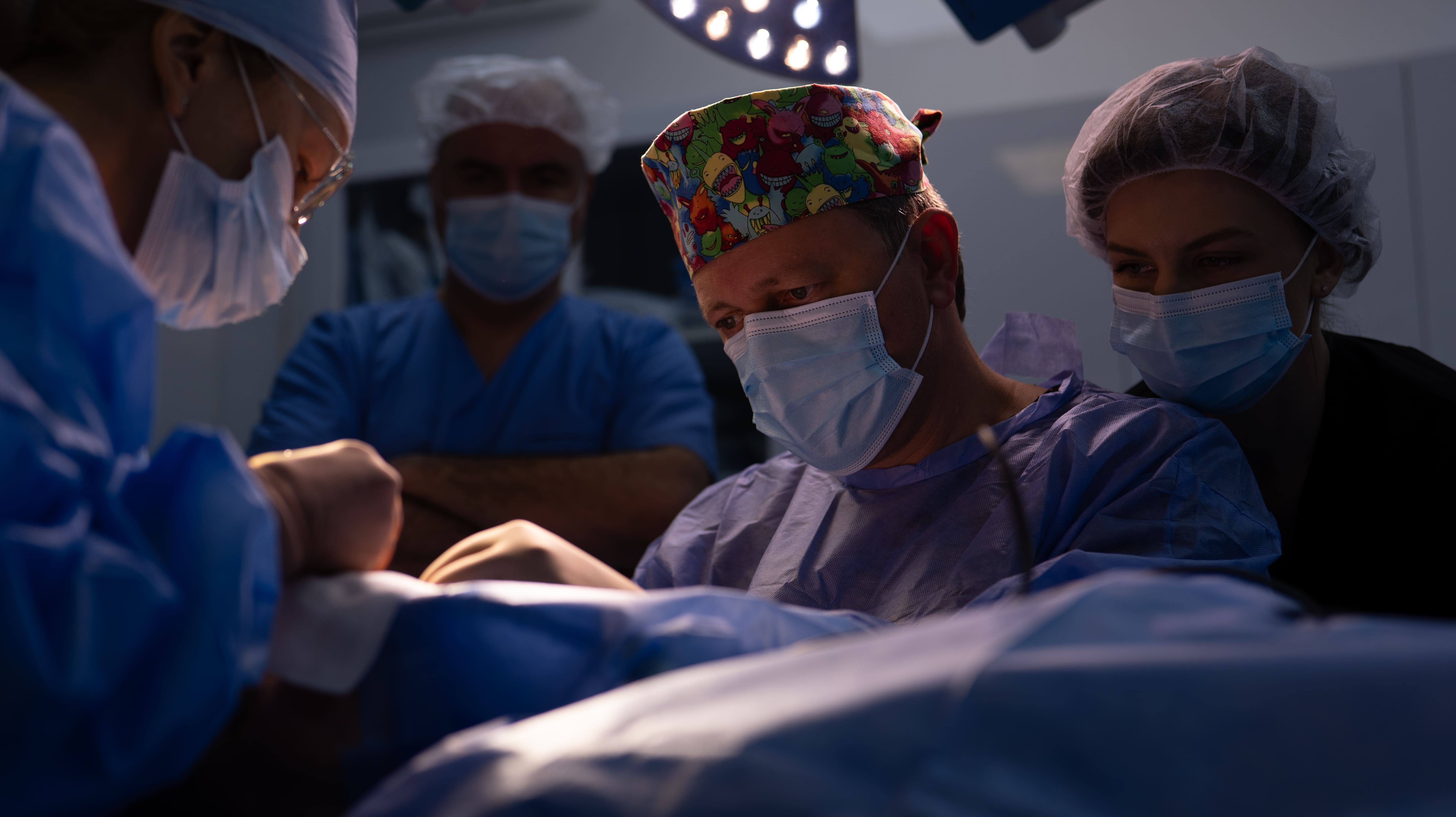Minimally invasive procedures in plastic surgery: modern approaches to rejuvenation and modeling of facial and body contours
In modern aesthetic medicine, leading plastic surgeons increasingly prefer minimally invasive techniques – procedures that achieve good results with minimal tissue disruption and fewer incisions.
Minimally invasive procedures not only shorten the recovery period, but also significantly reduce the risk of complications associated with open surgery.
Minimally invasive procedures currently performed by experienced plastic surgeons include endoscopic facelifts, lipofilling, liposuction of specific areas (e.g., chin, area above the knees, removal of gynecomastia in men), transconjunctival blepharoplasty, and others. When performed correctly, they can produce excellent and natural results without excessive trauma.
Endoscopic facelift: a modern approach to facial rejuvenation
An endoscopic facelift is a technique that allows sagging soft tissues of the face to be lifted with minimal trauma. The main advantage of this procedure is that the plastic surgeon works through small incisions in the scalp or behind the ears. An endoscope, a thin device with a camera, is inserted through these incisions, allowing the surgeon to clearly see the surgical field on a monitor and ensuring minimal tissue damage during the operation.
This method is ideal for patients (men and women) aged 35–50 who are beginning to show the first signs of aging (such as drooping eyebrows, cheekbones, and the first signs of nasolabial folds) but do not yet have excessive sagging skin.

One of the most modern techniques for minimally invasive facelifts is SMAS lifting, during which SMAS-level tissue is lifted with access through the patient's ears. This type of lift is not only well tolerated but also gives good, natural results without a “mask effect.” Often, the patient's friends and family may not even realize that they have had plastic surgery, describing their appearance as fresher and more rested — such is the subtlety of the changes.
Lipofilling: the patient's own fat as a natural filler
Lipofilling is a technique for transplanting the patient's own fat from one area of the body to another that needs correction. Adipose tissue acts as a natural filler, making certain areas more defined and supple, but since it is the patient's own tissue, the risk of rejection is minimized (provided that the plastic surgeon performs the procedure correctly and the patient follows all of the doctor's recommendations after the operation).
The procedure consists of several stages: first, fat is harvested (most often from the abdomen or thighs), then it is purified and injected into the areas requiring correction.
For which procedures is lipofilling most often used?
Facial rejuvenation
With age, the face loses volume, wrinkles appear, and the cheekbones become less pronounced. Your own fat allows you to gently restore lost volume, smooth wrinkles, and give your face a fresher and younger appearance.
Body contouring
Lipofilling is used to shape the buttocks, calves, arms, etc. It is particularly effective in combination with liposuction, when a plastic surgeon removes fat from “problem” areas and adds volume where needed during a single procedure.
Reconstructive surgery
Fat tissue is actively used to correct defects after injuries, burns, or cancer surgery. Thanks to its properties, it not only fills volume but also improves skin quality (increases elasticity) in the area of intervention.
Transconjunctival blepharoplasty: delicate rejuvenation without visible traces
Transconjunctival blepharoplasty is a modern technique for correcting the lower eyelids, which allows you to remove bags under the eyes without external incisions. During this operation, access to the fat pockets is gained through the inner surface of the eyelid (conjunctiva), which minimizes tissue trauma and eliminates the formation of visible scars.
The procedure is recommended for patients with pronounced fat hernias under the eyes without excess skin. The operation can be performed under local anesthesia and usually lasts 30–60 minutes. Thanks to the absence of stitches on the skin, rehabilitation is fairly quick: most patients return to their normal lives within 7–10 days.
This technique is ideal for people who want to improve their appearance and look younger while maintaining natural facial expressions and individuality.
Naturalness is the key to modern aesthetics
In my practice, I always strive for the most natural and harmonious results. Minimally invasive techniques are not just a “trend”; they are a requirement of modern patients who want to look younger without losing their individuality and spending a long time on rehabilitation. Despite the “ease” of these procedures, they require high precision, aesthetic sensibility, and a deep understanding of the technique from the plastic surgeon.
Minimally invasive surgery is a philosophy of delicate intervention with maximum results, because modern plastic surgery is designed to emphasize a person's natural beauty.
Contact me
Plastic surgeon
Ukraine, Kyiv, Shchekavytska St., 9a
(Clinic "Nove Tilo")


